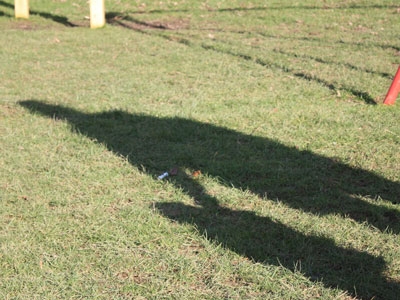
Nearly two thirds of children exposed to domestic abuse have been directly harmed, but only half are known to social services, research has revealed.
The study, published today by the charity Coordinated Action Against Domestic Abuse (CAADA), is based on a sample of 877 children receiving support from four specialist domestic abuse services across England. It found a clear link between domestic abuse in adult relationships and direct harm to children.
As well as witnessing the abuse of a parent, 62% of the children had experienced direct abuse in the form of physical abuse, emotional abuse or neglect. Despite this, just over half (54%) of these children were known to children’s social care services.
In most of the incidents the child abuse was perpetrated by the same person responsible for abusing the adult victim: usually the child’s father or their mother’s male partner.
The research also revealed the impact of witnessing domestic abuse, with half (52%) of the children displaying behavioural problems, 39% experiencing difficulties adjusting to school and 60% saying they felt responsible for what was happening at home.
A quarter of the children displayed abusive behaviour, usually directed towards their mother, sibling or friend, rather than the abuse perpetrator.
Although only around half the children were previously known to children’s social care, 80% were known to at least one public agency. They were therefore ‘in plain sight’ and able to be identified, the research stated.
The charity estimates 130,000 children are at high risk of serious harm or death from domestic abuse, while hundreds of thousands more are exposed to abuse at lower risk levels. It warned the risks faced by children are “insufficiently visible” to safeguarding teams because of a lack of understanding about domestic abuse among services and practitioners.
The report’s recommendations for local authorities include:
- Create a network of nominated lead professionals on domestic abuse and safeguarding across all agencies who work with families, with a shared understanding of risk assessment.
- Provide linked specialist domestic abuse services for adults and children.
- Monitor provision and outcomes for children exposed to domestic abuse.
Diana Barran, chief executive of CAADA, said: “Domestic abuse is a factor in the background of two thirds of serious case reviews. A number of these have made the headlines recently, including the tragic cases of Daniel Pelka and Hamzah Khan.
“For too long, services have worked in silos, with different assessments of risk around adult domestic abuse and children’s safeguarding.
“To prevent further needless deaths, leadership is needed to move agencies from a culture of referrals to one of proactive and effective joint action.”


 A trauma-informed approach to social work: practice tips
A trauma-informed approach to social work: practice tips  Problem gambling: how to recognise the warning signs
Problem gambling: how to recognise the warning signs 




 Find out how to develop your emotional resilience with our free downloadable guide
Find out how to develop your emotional resilience with our free downloadable guide  Develop your social work career with Community Care’s Careers and Training Guide
Develop your social work career with Community Care’s Careers and Training Guide  ‘Dear Sajid Javid: please end the inappropriate detention of autistic people and those with learning disabilities’
‘Dear Sajid Javid: please end the inappropriate detention of autistic people and those with learning disabilities’ Ofsted calls for power to scrutinise children’s home groups
Ofsted calls for power to scrutinise children’s home groups Seven in eight commissioners paying below ‘minimum rate for home care’
Seven in eight commissioners paying below ‘minimum rate for home care’
 Facebook
Facebook X
X LinkedIn
LinkedIn Instagram
Instagram
Tell news not history. It is so obvious this link exists for even if physical harm does not get transferred on to you ones emotional/psychological abuse must be transferred if not happening directly. If the adults involved think they are keeping it from the young ones they are kidding themselves. Children may not fully understand what is happening but they will know something is wrong and it will impact on their moods etc. It baffles me why money and time is spent to confirm the logical and what is known instead of getting stuck in and doing something about it.
There is such a strong culture to “evidence” the obvious that those who are vulnerable are left unprotected for far too long, this need for “evidence” also uses valuable and limited resources so making it significantly harder to protect the vulnerable.
The priority should be prevention of what is already known to exist rather that having the priority being the “evidence”
Domestic abuse is not a crime and layered up problems impact more on the main caregiver whilst the perpetrator is not accountable and so the kids can only take their issues to the person who is available to them. The issue of availability is arbitrary as in the main it is the victim who needs to turn into the survivor to make themselves available to their children. Once drugs and/or alcohol feature then it is nigh impossible to find a stable enough basis to move forward into education, work and the creation of a new life for the provision for your children by example as well as by promotion of normalisation of the childrens daily needs being met